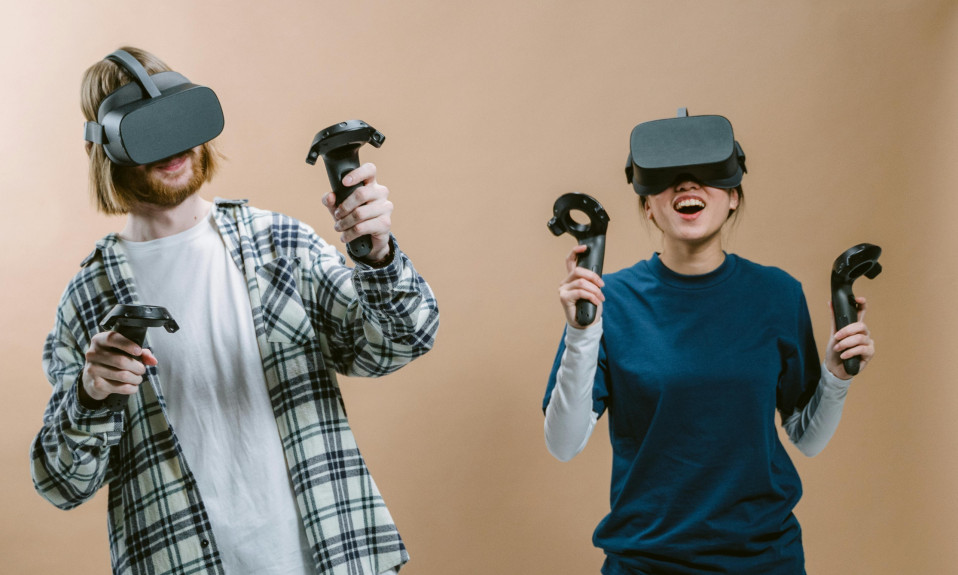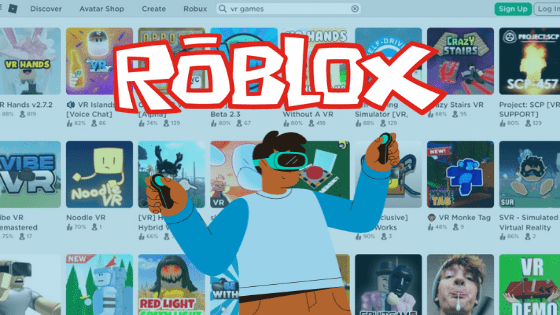Decentraland is a virtual reality platform founded in 2015 by Ari Meilich and Esteban Ordano.
Unlike most virtual reality platforms, decentraland shares ownership with its users and allows equal participation when making changes within their ecosystem.
Registered users can vote based on the number of Mana tokens (the in-game de facto cryptocurrency) they hold.
Following recent moves from tech giants like Meta (Facebook) to develop the metaverse, we saw massive rallies of new users to decentraland.
Most people claim the metaverse is here with us and refer to decentraland as a metaverse.
The closest we’ve gotten to developing the metaverse is through gaming platforms that incorporate virtual and augmented reality along with gadgets like VR headsets.
In our guide through the metaverse, we defined the metaverse as an “immersive shared and persistent virtual experience created by the convergence of virtual reality, augmented reality, mixed reality, and the internet.”
Going by this definition, decentraland virtual reality platform may not be the metaverse but gives us a feel of how the metaverse might look.
Without further ado, let us dive right into six ways decentraland is disrupting the metaverse and why you could join their community.
Quick Navigation
Decentraland Supports User-Driven Content
Most game platforms operate on a closed-innovation ecosystem, where the experiences and objectives of players are predefined.
It limits the abilities of gamers to create experiences other than those set by creators and developers.
Decentraland does a decent job, creating an ecosystem that gives users the freedom to explore virtual reality, interact with others and create experiences with minimal restrictions.
Decentralization gives absolute control to the users rather than having large corporations rule the metaverse.
Decentraland launched a Decentralised Autonomous Organisation (DAO) to support this cause and give power back to the users.
Users can vote for changes in land parameters, contribute to governing policies, adjustments to fees, and more within the decentraland ecosystem.
Voting power is the equivalent of mana tokens users own in their wallets.
And thanks to solutions like Snapshot, users no longer have to pay gas fees to participate in the voting process.
Decentraland also offers grants for community projects, proposals, and development within their virtual space if approved and voted for by the community.
I do not want a discount, said no one ever! Upgrade your VR setup today with top-tier accessories—use code META20 for 20% off + free shipping on orders over $15. Level up your VR experience now ➡️ Shop & Save!
Decentraland Supports A Persistent Virtual Experience
The real world is ever-changing; new infrastructures get built, old ones get demolished, death and birth among lifeforms ensure continuity.
In other words, the real world is a persistent environment with changes happening dynamically on auto-pilot.
Decentraland supports a persistent environment that helps create a sense of immersion and continuity in their virtual reality ecosystem.
With over 90,000 land parcels on decentraland, users can purchase and own several land parcels and build virtual real estate.
These parcels are unique NFTs (Non-fungible tokens) stored in the ethereum blockchain and acts as proof-of-ownership.
Decentraland also provides building tools that help landowners customize and modify their land parcels without requiring technical skills.
Several corporations have built virtual real estate on decentraland ecosystems.
Sotheby’s, one of the largest auctioneers in the world, opened a virtual NFT gallery and auction house on decentraland.
Axie Infinity, a popular virtual reality gaming platform, and Binance cryptocurrency wallet and trading platform both have virtual spaces on decentraland.
Currently, the least price for a land parcel on decentraland costs $13,000, and with the metaverse in its infancy, this says a lot about virtual real estate in years to come.
As the metaverse grows, persistent experiences would be at the forefront in creating virtual worlds that will enhance the sense of immersion.
Decentraland Seeks To Integrate With 4 Other VR Platforms
The metaverse would be a network of several virtual reality platforms interconnected to share resources and experiences.
Interoperability is a crucial feature that would define the metaverse.
It would enable the possibility of transporting digital assets across virtual worlds seamlessly.
To be fully realized, virtual reality platforms would have to work together to develop protocols and standards to support the goal of interoperability.
A proposal has been enacted on decentraland to grant Dr. Kim Nevelsteen $48,000 to support his project on making decentraland interoperable with four other virtual world platforms.
Dr. Kim has a Ph.D. in Distributed Pervasive Applications, and he’s a metaverse research scientist/professional software developer with over 20 years of experience working on interoperability.
His proposal aims to use his IPSME protocol to enable decentraland to become interoperable with other platforms using decentraland’s existing infrastructure.
In other words, Dr. Kim’s IPSME protocol supports interoperability without incurring cost-intensive changes to support third-party protocols.
This proposal is still under development with hopes of being fully implemented.
It certainly would be a milestone for decentraland in building an interoperable metaverse.
You can find more about their ongoing projects and proposals on their governance portal on decentraland.
Decentraland Supports Virtual Events and Concerts
The first-ever virtual reality music concert dates back to 2006, by a band known as Duran Duran, who performed on the second life, a virtual reality platform.
In a similar vein, there has been an increase in virtual events and concerts on popular virtual world platforms.
Art galleries within disparate metaverses organize virtual art shows and auctions where users can access galleries with their avatars and make purchases.
And like land parcels on decentraland, virtual artworks are also NFTs stored on their ethereum network for proof of ownership.
In October 2021, decentraland hosted its first-ever multi-day music festival and had guest appearances from over 80 artists worldwide.
Decentraland users could join in and purchase unique fan wearables for their avatars as NFTs from virtual merch stores available near the main stage.
Attendees could also join in without having a decentraland account just by visiting the festival homepage on decentraland’s website.
Following a tweet from decentraland after the virtual event, over 50,000 virtual attendees and 11,204 unique NFTs were claimed.
Decentraland promises to make virtual events even bigger and better as more attention shifts towards the metaverse.
Decentraland Launches Play-to-Earn Incubator & Decentral Games
With play-to-earn digital gaming platforms gaining traction, decentraland has positioned itself to become market leaders in this space.
Decentraland launched a play-to-earn incubator that allows internal and external contributors to make proposals and apply for grants towards developing virtual games for decentraland.
Contributors can pitch their ideas, get voted for; if selected, they would get grants in mana tokens and land leases to fund their projects.
In addition, they would be matched with teams and get access to a network of experts, mentors, and advisors throughout the development phase of their projects.
Decentral Games is a digital gaming platform launched by decentraland that allows users to play games to earn $DG tokens in virtual reality.
Popular games like Blackjack, Roulette, and Poker are available on decentraland’s virtual casino, and “$DG token rewards” can be converted to fiat if need be.
Players can also trade their NFTs and contribute towards making changes in decentral games governing policies by voting.
Unlike the mana token, voting rights are only available to users who stake their $DG token.
Staking can yield up to 40% returns and gets paid by decentral games as a fair yield for those who may decide to stake their $DG tokens.
Decentral games would need a USP while going up against top competitors in the online gambling and casino space.
Decentraland Supports Native Polygon Integration
Coin Market Cap shared an infographic on social media, showing cryptocurrencies with the highest transaction fees on the blockchain.
Transaction fees are the the biggest concern for those seeking to become their own bank 🏦
Here is the average transaction fee associated with various protocols pic.twitter.com/D8UocFssxI
— CoinMarketCap (@CoinMarketCap) January 13, 2022
With an average of $46.22 per transaction, ethereum has the highest rates of gas fees on the blockchain and is the first runner up having just $2.39 on average per transaction.
Ethereum is known to have high transaction or gas fees due to network congestion from over 3,000 decentralized apps (DApps) running simultaneously on the ethereum blockchain.
Mana, decentraland’s in-game cryptocurrency, runs on the ethereum network and may incur high transaction fees when spending Mana.
Decentraland switched to native polygon integration to serve as a layer two scaling solution for the ethereum network; this move was to help reduce the cost of gas fees.
Users can now switch their wallets directly to the polygon network before submitting their transactions.
Although Mana users would still pay polygon gas fees, they are only a fraction of the cost incurred for transacting on the ethereum network.
I do not want a discount, said no one ever! Upgrade your VR setup today with top-tier accessories—use code META20 for 20% off + free shipping on orders over $15. Level up your VR experience now ➡️ Shop & Save!
Conclusion:
Decentraland is among the first movers in the virtual reality platform space, giving power back to the users and working to build the metaverse we envision.
Exploring decentraland is limited to desktop devices, and according to their roadmap, they are working to integrate virtual reality gadgets.
From the reviews we saw, most desktop computers lag when trying to navigate decentraland virtual space affecting user experience overall.
Simply put, there is a lot of work and improvement that needs execution before wide-scale adoption can kick in.
That said, there are lots of exciting features on decentraland.
We are excited to see where this all goes in ten years from now as companies race to build an immersive metaverse experience.












